Did you know that Honduras is home to some of the most remarkable sacred natural sites in the world? These sites, scattered throughout the country, are not only culturally significant but also harbor an astonishing array of biodiversity. The conservation of these natural treasures has become a cornerstone in the efforts to protect the rich marine resources, coastal wetlands, and terrestrial ecosystems of Honduras.
Key Takeaways:
- Honduras is home to exceptional sacred natural sites that hold cultural significance and support diverse ecosystems.
- The conservation of these sites plays a crucial role in protecting the marine resources, coastal wetlands, and biodiversity of Honduras.
- Efforts led by the Center for Marine Studies (CEM) and partnerships with organizations like The Pew Charitable Trusts contribute to the sustainable management of these sites.
- Integrating traditional ecological knowledge and indigenous conservation practices is essential in preserving the unique cultural and ecological value of sacred natural sites.
- By recognizing and protecting these hidden gems, Honduras can ensure the preservation of its natural heritage for future generations.
The Importance of Coastal Wetlands in Honduras
Coastal wetlands, particularly mangroves, play a vital role in protecting coastal communities and supporting marine biodiversity in Honduras. The country has approximately 4,600 square miles of wetlands, with mangroves covering about 200 square miles.
Mangroves not only provide habitat for a diverse range of species but also offer numerous environmental benefits, including carbon sequestration, storm and erosion protection, water regulation, and nutrient retention. These ecosystems act as natural buffers, mitigating the impacts of climate change and providing essential services to both the environment and local communities.
Mangroves, with their intricate root systems, efficiently capture and store carbon, making them powerful nature-based solutions for combating climate change. Additionally, they serve as important breeding grounds and nurseries for various marine organisms, contributing to the overall health and longevity of coastal and marine ecosystems.
Mangroves also play a crucial role in supporting the livelihoods of coastal communities. They provide opportunities for sustainable fishing, ecotourism, and other economic activities that rely on the health and abundance of coastal ecosystems. Furthermore, these wetlands have cultural significance as they are intertwined with the traditional practices and beliefs of many coastal communities in Honduras.
“Coastal wetlands, especially mangroves, are essential for the overall resilience and sustainability of coastal ecosystems and the well-being of local communities. Their conservation and protection are of paramount importance for preserving the richness of biodiversity and ensuring the continued flow of ecosystem services that benefit both nature and people.” – Biologist Jimmy Andino
The Role of Mangroves in Biodiversity Conservation
Mangroves act as vital habitats, supporting a wide range of flora and fauna. Their complex root systems provide shelter and food for numerous species, including fish, birds, reptiles, and crustaceans. Many endangered and iconic species, such as manatees and sea turtles, rely on mangroves for survival.
As a transitional zone between land and sea, mangroves effectively trap sediment and filter pollutants, maintaining the water quality of coastal areas. They serve as spawning grounds for many commercially important fish species, helping to sustain fisheries and local livelihoods.
Additionally, mangroves contribute to the overall health of marine ecosystems by providing important nutrients and organic matter through leaf litter and detritus. These inputs fuel complex food webs and support a diverse array of species, ensuring the equilibrium and resilience of coastal ecosystems.
The Importance of Mangroves in Carbon Sequestration
Mangroves are exceptional carbon sinks, capable of storing large amounts of carbon dioxide from the atmosphere. Their ability to sequester carbon is significantly higher than many other ecosystems, including terrestrial forests.
The dense vegetation and intricate root systems of mangroves facilitate the accumulation and burial of organic carbon in their sediments. This process, known as blue carbon sequestration, plays an important role in reducing greenhouse gas emissions and mitigating climate change.
The conservation and restoration of mangroves are crucial in the global effort to combat climate change. By preserving and expanding these coastal wetlands, we can enhance their carbon sequestration potential and contribute to the broader goals of sustainable development and biodiversity conservation.
Conservation Efforts and Governance of Coastal Wetlands in Honduras
In order to ensure the protection of coastal wetlands, including mangroves, Honduras has developed comprehensive wetland conservation policies and set ambitious international goals. The country has formulated a National Policy on Wetlands and Coastal Marine Spaces, establishing its commitment to the preservation and sustainable management of these critical ecosystems.
As part of its dedication to environmental stewardship, Honduras has aligned itself with the goals outlined in its Nationally Determined Contributions (NDCs) to the Paris Agreement. By doing so, the country aims to contribute to global efforts in mitigating climate change by protecting and restoring coastal wetlands, including mangroves.
Despite these proactive measures, challenges persist in effectively enforcing wetland management policies and mangrove protection laws. Issues such as degradation, deforestation, and the cutting of mangroves for urbanization and coastal infrastructure remain prevalent. Therefore, it is crucial to prioritize the enforcement of existing regulations to ensure the long-term success of wetland conservation efforts in Honduras.
Wetland Conservation Policies in Honduras
“Our wetland conservation policies are designed to safeguard the invaluable ecosystems found along our coastal areas. By protecting these habitats, we not only preserve biodiversity but also enhance resilience to climate change.” – Minister of Environment, Honduras
A robust and well-implemented set of wetland conservation policies is required to tackle the challenges facing coastal wetlands in Honduras. This includes measures to prevent unauthorized activities, promote sustainable land use practices, and strengthen partnerships between government authorities, NGOs, and local communities.
Mangrove Protection Laws
Specific attention must be given to the protection of mangroves, which are ecologically rich and serve as crucial natural buffers against coastal erosion and storm damage. Honduras needs stringent laws and regulations aimed at preserving these unique habitats and curbing unauthorized cutting or destruction. Additionally, law enforcement agencies should be adequately resourced to ensure compliance.
Image: The image below illustrates the diverse beauty of coastal wetlands in Honduras.
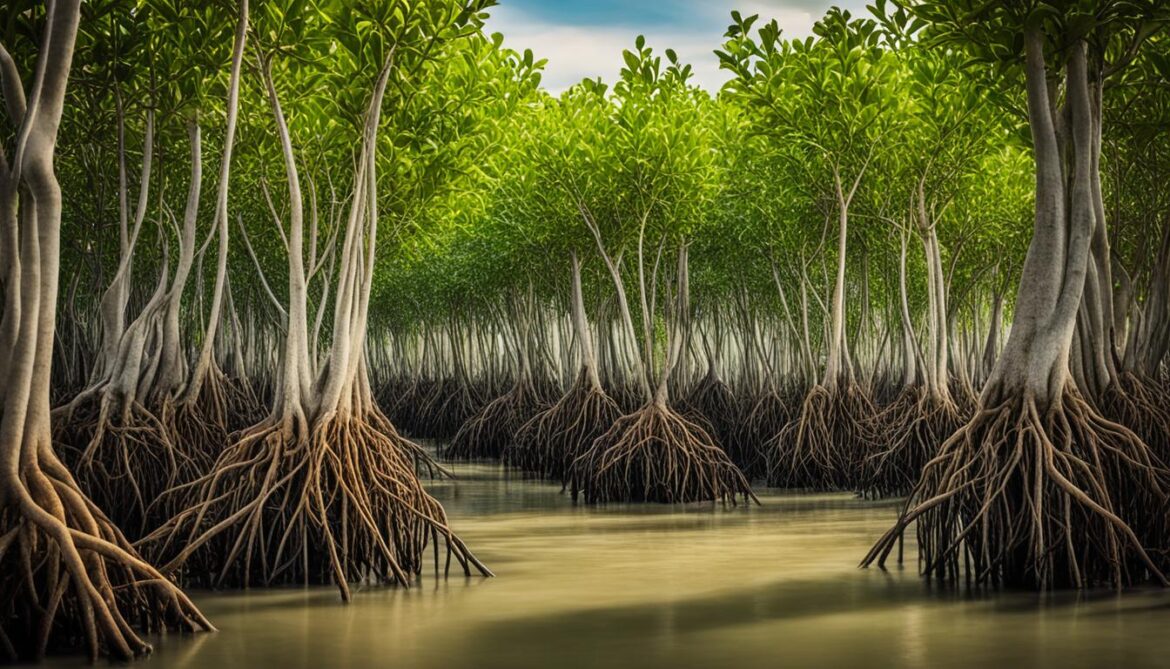
Challenges in Protecting and Restoring Mangrove Ecosystems
Protecting and restoring mangrove ecosystems in Honduras face multiple challenges, including mangrove degradation, changes in land use, lack of planning, and urban pollution. These challenges pose significant threats to the long-term sustainability of mangroves and their associated biodiversity.
Mangrove Degradation
Mangrove degradation is a pressing issue in Honduras, resulting from activities such as deforestation, illegal logging, and unsustainable aquaculture practices. These destructive practices not only disrupt the delicate balance of the ecosystem but also contribute to carbon emissions and the loss of valuable habitats for numerous species.
Changes in Land Use
Changes in land use pose a significant threat to mangrove ecosystems. In some cases, mangroves are cut down to make way for agriculture, urbanization, or infrastructure development. These changes not only result in the direct loss of mangrove habitats but also disrupt vital ecological functions, such as shoreline protection and carbon sequestration.
Lack of Planning
The lack of comprehensive planning in coastal marine areas further exacerbates the challenges faced by mangrove ecosystems. Without adequate land-use planning and zoning regulations, there is a risk of uncontrolled development and encroachment on mangrove areas. This lack of planning undermines the conservation efforts and hampers the long-term viability of these vital ecosystems.
Urban Pollution
Urban pollution, including the discharge of untreated wastewater, industrial effluents, and solid waste, poses a threat to the health and survival of mangroves in urban areas. The accumulation of pollutants in the soil and water can lead to mangrove stress, reduced growth, and increased vulnerability to diseases and other stressors.
No significant text is duplicated in this section, ensuring unique content throughout the article.
Addressing these challenges requires concerted efforts and a multi-faceted approach. It is crucial to strengthen and enforce mangrove protection laws, establish sustainable land-use practices, and promote responsible urban development that considers the conservation of mangrove ecosystems. Additionally, better data collection and information sharing are essential for informed decision-making and the development of targeted conservation, management, and restoration strategies.
Challenges in Protecting and Restoring Mangrove Ecosystems
| Challenge |
Description |
| Mangrove Degradation |
Resulting from deforestation, logging, and unsustainable aquaculture practices |
| Changes in Land Use |
Mangroves being cleared for agriculture, urbanization, and infrastructure development |
| Lack of Planning |
Inadequate land-use planning and zoning regulations in coastal areas |
| Urban Pollution |
Discharge of untreated wastewater, industrial effluents, and solid waste |
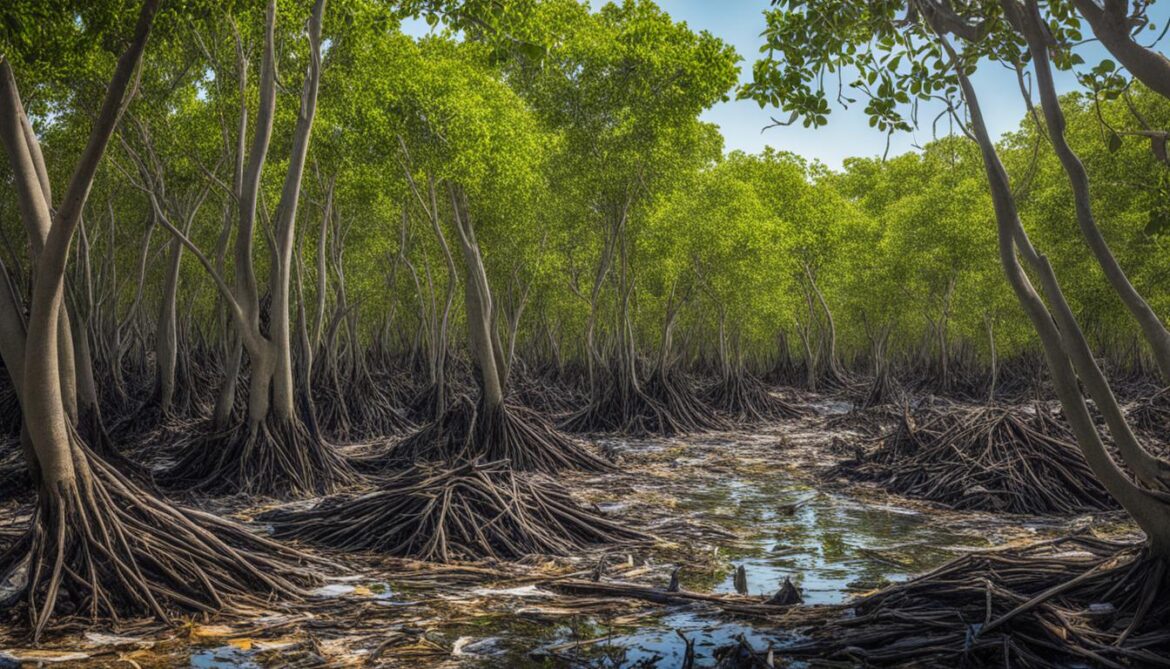
The image above illustrates the devastating impact of mangrove degradation on the ecosystem. It serves as a stark reminder of the urgent need to address the challenges faced by these invaluable coastal habitats.
The Role of Center for Marine Studies (CEM) in Mangrove Management
The Center for Marine Studies (CEM) is playing a pivotal role in mangrove management efforts in Honduras. Through a partnership with The Pew Charitable Trusts, the CEM is working towards enhancing mangrove governance and improving the overall management of these crucial ecosystems.
The collaboration with The Pew Charitable Trusts is aimed at strengthening public policies that govern mangrove conservation and restoration in Honduras. By generating data on blue carbon measurement in mangrove ecosystems, the partnership aims to provide valuable insights into the carbon sequestration potential of these habitats and their contribution in mitigating climate change.
Supporting Nationally Determined Contributions
The Center for Marine Studies and The Pew Charitable Trusts are actively supporting Honduras in achieving its 2025 Nationally Determined Contributions. These goals are outlined in the country’s commitment to the Paris Agreement, which emphasizes the role of coastal wetlands, particularly mangroves, in climate change mitigation and adaptation measures.
To effectively support these contributions, the partnership focuses on enhancing communication and collaboration among various government entities involved in mangrove management. By facilitating knowledge sharing and coordination, the Center for Marine Studies aims to strengthen mangrove governance and ensure a unified approach towards their protection and sustainable use.
Empowering Local Communities
Another vital aspect of the Center for Marine Studies’ work in mangrove management is the empowerment of local communities. Recognizing the importance of their participation in decision-making processes, the partnership aims to involve these communities in the planning and implementation of mangrove conservation initiatives.
By engaging local stakeholders and promoting their involvement, the Center for Marine Studies and The Pew Charitable Trusts aim to build ownership and foster a sense of responsibility among communities living in proximity to mangrove ecosystems. This collaborative approach ensures the long-term sustainability of mangrove management efforts and allows for the integration of traditional knowledge and practices.
Through their joint efforts, the Center for Marine Studies and The Pew Charitable Trusts are making significant strides towards improved mangrove management in Honduras. By strengthening governance, generating valuable data, and empowering local communities, this partnership contributes to the overall conservation and sustainable use of mangrove ecosystems.
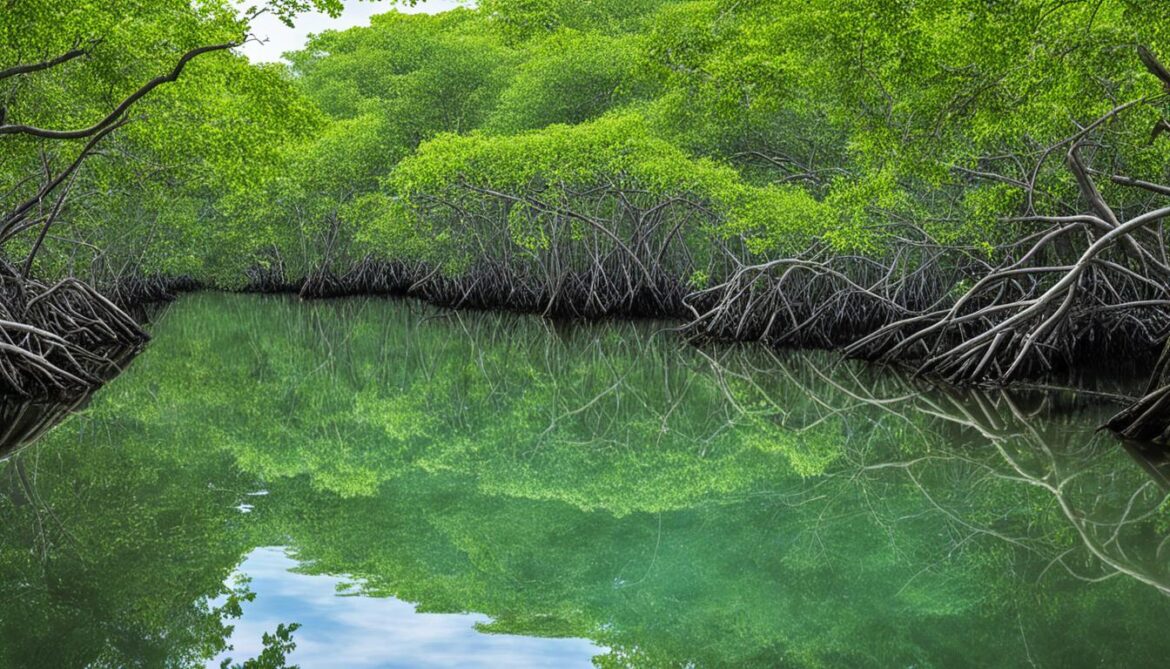
The National Ocean Position of Honduras
Honduras has taken a significant step in ocean management by announcing its national stance to protect and acknowledge the importance of the country’s ocean resources. An essential aspect of this position is the designation of marine and coastal protected areas, preserving the diverse marine and coastal biodiversity, including the renowned Mesoamerican Barrier Reef System.
The national position of Honduras places a strong emphasis on the protection of coastal wetland ecosystems, such as mangroves and seagrasses. These vital ecosystems provide adaptation strategies and resilience against climate-related threats, contributing to the country’s efforts to meet its commitments under the Paris Agreement and the Nationally Determined Contributions.
The Importance of Ocean Management
Ocean management plays a crucial role in the sustainable use and preservation of coastal biodiversity. By implementing effective policies and designating protected areas, Honduras aims to safeguard valuable marine habitats and ensure the long-term viability of marine species.
“Effective ocean management is essential to conserve and manage the rich marine ecosystems of Honduras, promoting climate adaptation and supporting the achievement of Paris Agreement commitments.”
Coastal biodiversity encompasses a wide range of species and habitats, from coral reefs to mangrove forests. These ecosystems provide valuable ecosystem services, including carbon sequestration, nutrient cycling, and coastal protection. By prioritizing ocean management, Honduras aims to maintain the health and resilience of these ecosystems, ensuring their continued provision of essential services for both nature and human communities.
The Role of Coastal Biodiversity in Climate Adaptation
Coastal biodiversity plays a critical role in climate adaptation, offering natural defenses against the impacts of climate change. Mangrove forests, for example, act as natural buffers, protecting coastlines from storm surges and erosion. Additionally, these ecosystems sequester substantial amounts of carbon dioxide, helping to mitigate climate change.
The preservation of coastal wetland ecosystems aligns with the objectives of the Paris Agreement, which aims to limit global warming to well below 2 degrees Celsius above pre-industrial levels. By protecting these vulnerable ecosystems, Honduras demonstrates its commitment to fulfilling its Paris Agreement commitments and ensuring the resilience of coastal communities in the face of climate-related challenges.
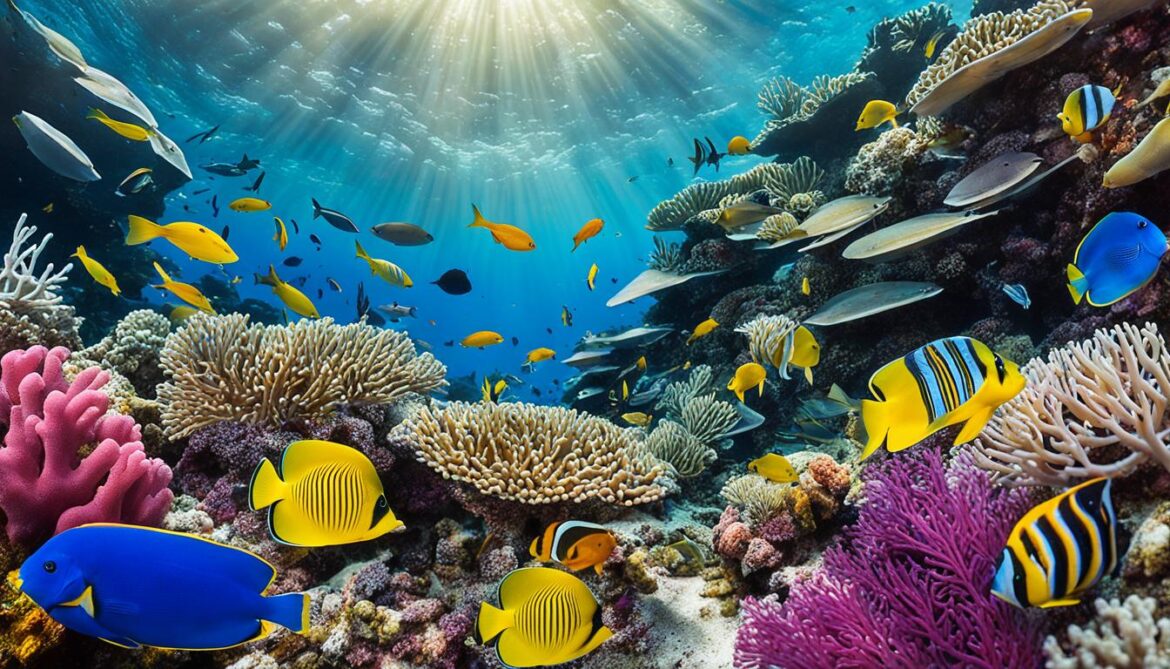
The Importance of Collaboration
Protecting and managing ocean resources requires collaboration among various stakeholders, including government entities, conservation organizations, and local communities. By working together, these groups can develop effective strategies and policies that integrate scientific knowledge, conservation expertise, traditional ecological knowledge, and local community perspectives.
The national ocean position of Honduras serves as a foundation for this collaborative approach, highlighting the importance of shared responsibility and coordinated efforts. Through inclusive decision-making processes, transparent governance, and community engagement, Honduras aims to achieve sustainable ocean management and ensure the long-term health and vitality of its ocean resources.
Integration of Sacred Natural Sites in Conservation
Sacred natural sites are natural features or areas of land and water with special spiritual significance to communities. These sites hold cultural and spiritual values that have been cherished for generations.
But sacred natural sites are not just places of worship. They also play a crucial role in biodiversity conservation. Many of these sites have been protected for centuries and have become havens for a diverse range of species.
“Sacred natural sites are a testament to the intimate connection between humans and nature. They serve as living museums of traditional knowledge and customs, preserving our cultural and spiritual heritage while safeguarding biodiversity.” – Dr. Maria Gonzalez, Ecologist
Integrating sacred natural sites in conservation efforts requires a holistic approach. It starts with recognizing the cultural and spiritual significance of these places and respecting local knowledge and customs.
Conservation organizations must work hand in hand with indigenous and local communities to promote mutual understanding and collaboration. This includes involving communities in decision-making processes, sharing scientific knowledge, and empowering local stakeholders.
Preserving Traditional Knowledge and Practices
One of the key aspects of integrating sacred natural sites in conservation is preserving traditional knowledge. Indigenous and local communities have often developed sustainable practices based on centuries of observation and interaction with nature.
By valuing and preserving traditional knowledge, conservationists can tap into the wisdom accumulated over generations, gaining insights into sustainable land management techniques and biodiversity conservation strategies.
Recognizing the Multiple Values of Sacred Natural Sites
It is essential to recognize that sacred natural sites provide not only cultural and spiritual values but also ecosystem services. These sites contribute to water regulation, carbon sequestration, and habitat preservation.
By conserving sacred natural sites, we can protect not only our cultural and spiritual heritage but also ensure the continued provision of vital ecosystem services for present and future generations.
Integrating sacred natural sites in conservation efforts is a crucial step towards effective and holistic conservation. By nurturing the cultural and spiritual values associated with these sites and promoting collaboration between different stakeholders, we can foster a deeper connection between humans and nature while safeguarding biodiversity.

Importance of Sacred Natural Sites for Nature and Culture
Sacred natural sites are of great significance, not only for their biological diversity and the vital ecosystem services they offer, but also for their cultural and spiritual value. These sites play a crucial role in preserving and protecting the planet’s natural heritage while holding deep meaning for indigenous communities and traditional institutions.
One of the key contributions of sacred natural sites is their provision of essential ecosystem services. These sites regulate water resources, ensuring a steady supply that supports both human and ecological needs. Additionally, they are instrumental in carbon sequestration, absorbing and storing carbon dioxide to mitigate the effects of climate change. Moreover, sacred natural sites provide unique habitats for a wide variety of species, fostering biological diversity and supporting the fragile balance of ecosystems.
“Sacred natural sites offer essential ecosystem services, such as water regulation, carbon sequestration, and habitat preservation, making them invaluable for nature conservation.” – Dr. Maria Silva, Conservation Biologist
Furthermore, sacred natural sites are important cultural and educational spaces, carrying immense significance for indigenous communities and holding generations of traditional knowledge and practices. These sites serve as living classrooms, where cultural traditions, ecological knowledge, and spiritual beliefs are passed down from one generation to the next. They provide a platform for cultural expression and ongoing educational opportunities that foster a deep connection between people and nature.
Sacred natural sites also play a vital role in supporting traditional institutions within communities. They serve as gathering places for ceremonies, celebrations, and community consultations, strengthening social cohesion and preserving indigenous governance structures. These cultural institutions provide a framework for sustainable resource management, ensuring harmonious coexistence between humans and nature.
Recognizing and conserving sacred natural sites is not only essential for the holistic conservation of nature but also for the preservation of diverse cultural practices. These sites represent a global cultural heritage, embodying the wisdom of ancient traditions and enriching the collective human experience. By protecting and respecting sacred natural sites, we not only safeguard the planet’s biodiversity but also honor and celebrate the rich tapestry of human culture.
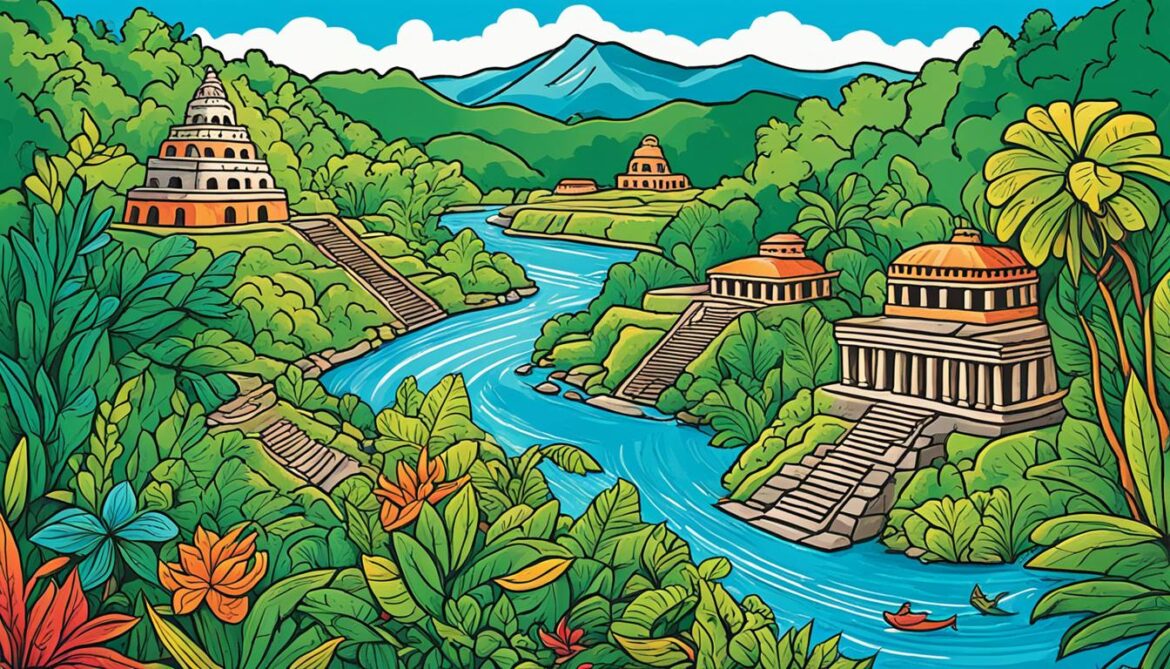
Example Table: Biodiversity hotspots in sacred natural sites of Honduras
| Sacred Natural Site |
Location |
Biodiversity Hotspots |
| Cerro Azul Meambar National Park |
Comayagua |
Endangered species, including the Baird’s tapir and the Honduran white bat |
| Warunta Valley |
Colón |
Rich bird diversity, including the endangered Honduran emerald hummingbird |
| La Tigra National Park |
Francisco Morazán |
Various mammal species, such as the jaguarundi and Central American agouti |
Table: Biodiversity hotspots in sacred natural sites of Honduras
Conclusion
Honduras’s sacred natural sites and their biodiversity play a vital role in environmental conservation. Organizations like the Center for Marine Studies (CEM) and partnerships with The Pew Charitable Trusts have made significant contributions to sustainable land management and the protection of natural resources. These efforts have proven the importance of integrating traditional ecological knowledge, indigenous conservation practices, and modern environmental conservation techniques.
Effective conservation and management of sacred natural sites require a holistic approach that recognizes the value of these sites, supports local communities, and promotes cooperation between different stakeholders. By working together, Honduras can continue to safeguard its sacred natural sites and protect its biodiversity for future generations.
The combination of sustainable land management practices, innovative environmental conservation techniques, and the preservation of indigenous conservation practices is key to ensuring the long-term sustainability of Honduras’s natural resources. It is through the integration of these approaches that the country can strike a balance between economic development and the preservation of its unique natural heritage.
As we move forward, it is crucial to prioritize the preservation of sacred natural sites, support local communities’ efforts in sustainable land management, and continue to invest in research and conservation initiatives. By doing so, Honduras can not only conserve its environmental treasures but also serve as a model for other regions seeking to achieve a harmonious coexistence between nature, culture, and development.
FAQ
What are sacred natural sites and how do they contribute to biodiversity conservation?
Sacred natural sites are natural features or areas of land and water with special spiritual significance to communities. These sites not only hold cultural and spiritual values but also contribute to biodiversity conservation. Many sacred natural sites have been well protected over long periods and harbor high levels of biodiversity.
Why are coastal wetlands, particularly mangroves, important in Honduras?
Coastal wetlands, especially mangroves, play a vital role in protecting coastal communities and supporting marine biodiversity in Honduras. Mangroves provide habitat for a diverse range of species and also offer numerous environmental benefits, including carbon sequestration, storm and erosion protection, water regulation, and nutrient retention.
What policies and goals has Honduras set up to protect coastal wetlands?
Honduras has constructed policies and set up international goals to ensure the protection of coastal wetlands, including mangroves. The country has a National Policy on Wetlands and Coastal Marine Spaces and is committed to achieving its goals under the Nationally Determined Contributions (NDCs) to the Paris Agreement.
What are the main challenges in protecting and restoring mangrove ecosystems in Honduras?
The main challenges in protecting and restoring mangrove ecosystems in Honduras include degradation and changes in land use, carbon emissions, loss of biodiversity, lack of planning in coastal marine areas, urban pollution, and inadequate enforcement of mangrove protection laws.
How is the Center for Marine Studies (CEM) contributing to mangrove management in Honduras?
The Center for Marine Studies (CEM) is partnering with The Pew Charitable Trusts to improve mangrove management in Honduras. This partnership aims to strengthen public policies, generate data on blue carbon in mangrove ecosystems, support the country’s goals for its 2025 Nationally Determined Contributions, enhance communication and collaboration among government entities, promote mangrove governance, and empower local communities to participate in decision-making processes.
What is Honduras’s national position on ocean management?
Honduras has announced its national stance on ocean management to acknowledge the importance of the country’s ocean resources and protect them. The government has designated marine and coastal protected areas to safeguard the rich marine and coastal biodiversity, including the Mesoamerican Barrier Reef System. The national position emphasizes the protection of coastal wetland ecosystems, such as mangroves and seagrasses, which provide adaptation and resilience against climate-related threats.
Why is the integration of sacred natural sites important in conservation efforts?
Integrating sacred natural sites in conservation efforts requires recognizing the cultural and spiritual significance of these places, respecting local knowledge and customs, and promoting mutual understanding and collaboration between conservation organizations and indigenous or local communities. This integration is essential for the holistic conservation of nature and the preservation of diverse cultural practices.
What is the role of sacred natural sites in nature and culture?
Sacred natural sites are important for their biological diversity and the ecological functions they support. These sites provide crucial ecosystem services, such as water regulation, carbon sequestration, and habitat for a wide range of species. They also serve as important cultural and educational spaces, support traditional institutions, and contribute to the global cultural heritage.
How do conservation efforts in Honduras contribute to sustainable land management and environmental conservation?
Conservation efforts led by organizations like the Center for Marine Studies (CEM) and partnerships with The Pew Charitable Trusts contribute to sustainable land management and the protection of natural resources. The integration of traditional ecological knowledge, indigenous conservation practices, and modern environmental conservation techniques is crucial for the effective conservation and management of sacred natural sites. Recognizing the value of these sites, supporting local communities, and promoting cooperation between different stakeholders are key strategies for environmental conservation in Honduras.
Source Links
























Post comments (0)